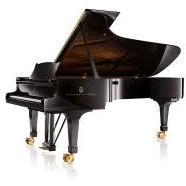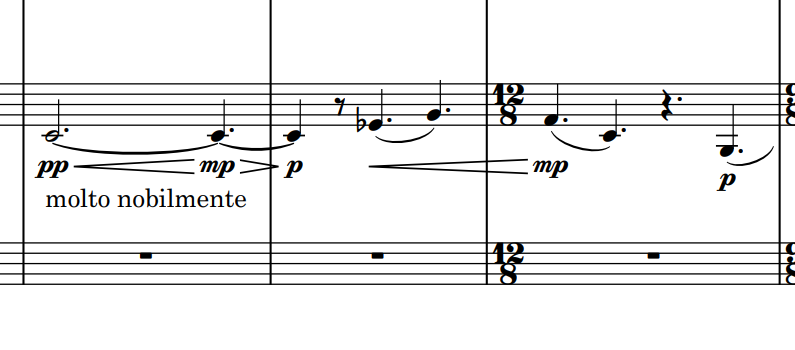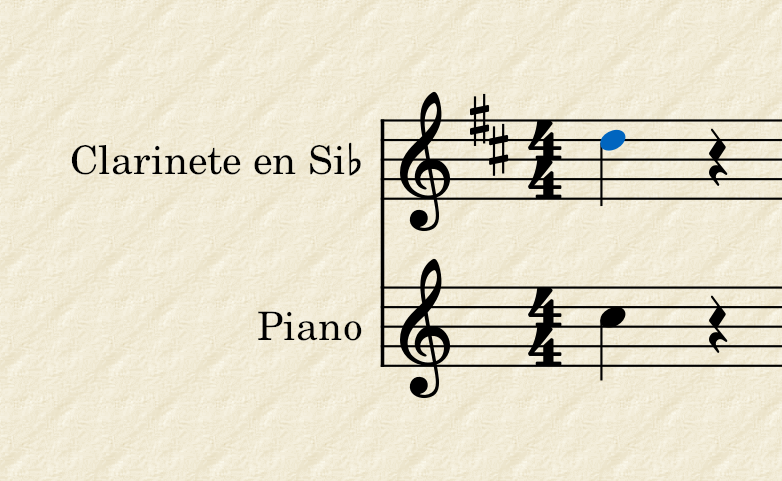Leaderboard
Popular Content
Showing content with the highest reputation on 12/12/2022 in all areas
-
2 points
-
Hello there. This is a solo guitar piece I recorded for a video that's being made. The details of it aren't final, but there will be dancing in the woods, and things to that effect. I have this tabbed out, so if there's any interest in seeing that I'll make it look pretty, but otherwise, I hope you enjoy! Oh yeah, it's about a girl 😄1 point
-
After a lengthy period of time...Here it is! It’s arguably my best composition to date. All comments are welcome, particularly critiques pertaining to the style! A French overture with 5 voices, followed by an extended “concerto” fugue based on a ritornello theme (bars 39-70). The overture returns at the end with a surprise 🙂 Also attached a fugue diagram, for your interest: https://imgur.com/a/1MYsogG1 point
-
This is a longer piece for me in regards to duration. I try to use all elements of the orchestra with multiple key changes, and motives like a 3 note lower range riff with building voice leadings/chords that build suspense and tension. I finish the composition with a section of just strings then eventually I finish on a big tri-tone interval.1 point
-
Thank you for your comments! It's interesting to see that there is a general consensus on the fugue being too short and the ending perhaps too abrupt. As I have said above, in any future revision I'll of course take on all this feedback! I'm also looking to enter the competition again next year (for brass ensemble + organ) so the main things I will take away would be to develop develop develop material as much as possible, with fewer ideas to fit into the time limit - and of course work out a showstopping ending! @Thatguy v2.0 - Thanks so much for the comment - I couldn't be happier with the performance and the quartet really had a way of elevating each piece to extraordinarily musical works! This semi-dissonant clustery language is something I use quite a lot at the moment, glad to hear you enjoyed it in this piece. You do seem to be in the minority about the fugue - I'm not going to take it out because it's fairly important to the concept of the piece, but lengthening it significantly would I think help with it feeling 'stuck-on'. And yes, I agree with you that keeping a smaller number of ideas would maybe have been better for this time limit. Thank you! I'm happy to hear that the fugue wasn't too dry/plain/derivative, I was aiming to keep it a bit quirky through the texture and counterpoint. Of course I would have loved more variations - sadly time limits are sent to try us! My favourite variation is no. 2. Interestingly I don't like no. 3 as much but it seems to be popular among these commenters! Also Peter, I have just noticed your signature - made me laugh! Another big thank you for all your comments!1 point
-
Hi again Henry, let's begin: • Quiet, melancholic introduction that announces that this piece is not gonna be a peaceful walk in the park during a sunny day at spring. The recording has obviously room for improvement, but as @Thatguy v2.0said it captures the moment and you defend it very nicely anyways. A digital interpretation wouldn't have told me what you do when playing this, so thank you for that. • The trills section near 2:35 must have been quite tricky, good job! • The "Presto molto agitato" section coming after —which in turn precedes the allegro— is captivating. My only criticism: almost all ff and fffs with the exception of the one in M115 lack strength, kind of. However, I'd say this is not your fault after all but of the recording itself. • You come back to your first motive after those sections. From that section and so on, I feel the emotional charge this piece has slowly increase towards the end. • Regarding precisely the end: you did build a successful ending near ~6:20 but you chose to keep composing hmmm, let's see where it goes. For now, to a very beautiful passage that seems to precede an even better final... • And that's it, you did it, you made a better final. You risked it and managed to do a marvellous final section that fits with everything played before and concludes your interpretation solidly. In summary a very emotional and inspiring piano solo with captivating sections and a neat final. Congratulations, Henry! Kind regards ^^!1 point
-
Not much to add to the previous great comments. As @PeterthePapercomPoser said, doubling instruments should not appeared or even play together! You should indicate in the score whenever there is instrumental change, or just treat it as a septet. And as @Omicronrg9 said, only in atonal music does the transposed instruments do not need to be written in a transposed key. But I feel like your piece is quite tonal, so I suggest you to write transposed key for the clarinets, horn and english horn. Regarding the music itself is really nice and chilling! I don't think that will be really difficult to be performed for the wind players.1 point
-
Great! Many thanks. It's very nice to follow the music while one's eyes advance through the score. BTW, would you mind if I shared your piece in my kinda empty twitter? I am lately asking many people this because I think it would be nice to somehow try to share nice pieces here on a daily basis. As I said I have no traffic but I would like to keep doing it anyway. Would it be for you? That's the actual question. Definitely the passage at 5:30 is one of my favourite ones in case I didn't say this before. After it, you come back to old ideas of the beginning, with (I believe) the intention of making a coda and it starts nicely. In fact I'm still hooked at 7:30 and I would say that the flute leads the piece pretty nicely but it's from M117 and so on where things don't end up convincing me. It's still good to my ears at least, don't get me wrong. Coming back to the question then, in my opinion what might make the mentioned section at 5:30 so good to me is that you take this: (why an entire silence and not a just a comma between C and G, just out of curiosity) and you slowly and carefully envelop it with other voices that don't go against (at least, not too much) what the French Horn is saying, as opposed to what might happen in the section preceding 5:30 for example, where you intentionally (I believe) avoid harmonic and melodic movements that could make one think that we're not in tension anymore, "in the I grade" and make some voices perform rhythms that don't seem to accompany the melody at first glance nor are repeated enough to cause any feeling of order. Another detail: was your intention to make this atonal? I ask because I see the same key signature in all instruments in the score. This is kinda strange since some of them are transposing instruments and therefore they should have different keys and should've been written accordingly. For example if we are in C Major the Bb clarinet should have this key: Same goes with French Horn in F. When it says C you're playing an F so the key should be G Major (if I'm not mistaken) so I believe you wrote for clarinet in Bb like if it were a clarinet in C. After commenting this with some other YC mates this seems to be not uncommon these days so no worries haha. Sorry again for the density. Perhaps some bit of these words can help you decide. In any case, my best advice would be: keep composing! Kind regards, Daniel–Ømicrón.1 point
-
Hi, this little form is appealing. I wrote this piece (OMG, I think I lost my post-tonal skills....) following the barcarola standards, but I couldn't help giving it a harmonic twist. I think harmony is an endless field to be creative. Mistake: in m. 22 the chord is not E7/D#----- It is E/D#.1 point
-
Hello Daniel-Omicron, thank you so much for listening and for your thoughtful and detailed feedback! I edited my post to include a score. I wasn't aware of my lack of a leading voice until you pointed it out, and now I hear the extent of it. I did intend a feeling of chaos in the passage leading into 5:30, but otherwise, would it be better in general throughout the piece to have more extended passages spotlighting one instrument similar to the horn passage at 5:30? I think part of my avoidance of that outside the horn passage was because I wanted to give each player time to rest. I may have taken that too far and would need to consult woodwind players to be sure. Thank you again!1 point
-
Regarding your first question, I do not mind at all of course! Can't help you with your issue very specifically since I don't know about woodwinds enough, but the piece doesn't seem to go wild in a technical sense. As Mark said, it would be really helpful if you provided a score. Now regarding the piece itself: • A nice, intriguing beginning. A "blurred" cresc. from it to ~0:45 that sounds very beautiful but that after reaching its end the music enters in a passage where nothing seems to be going in any direction. Then, some more solid passages that end in a silence that is not too abrupt to my ears and with which I expected some transition, but it is kinda timid. There are some rhythmical measures but if I conjoin all of them I don't get again any particular direction. Don't get me wrong, it does sound beautiful, there are some very nice bits here and there but I feel like if the instruments were lost and couldn't find the way to keep going. One of them finds it but some other voice ends up "distracting" that instrument and we come back to the origin. • That feeling is still present at ~4:00. New voices come in and out up to ~5:30 where things calm up a bit and the light at the end of the tunnel intensifies. The last long silence allows the entrance to a new section that despite some voices that try to convince me of the opposite, seems to mark the end of the wind the more we approach the end... But I'm not sure if they ended up doing so. In summary, a piece that sounds beautiful but that in my humble opinion lacks a leading voice that thus makes every passage blend which is not necessarily bad, but it can be, specially if doing so is not your intention, as if overused —in my experience— has the effect of nullifying the particular character of each instrument. Hope I've not been too dense and thank you for sharing it! I'm sure that a score will help woodwind players to tell you what can be more or less tricky to perform. Kind regards, Daniel–Ømicrón.1 point









